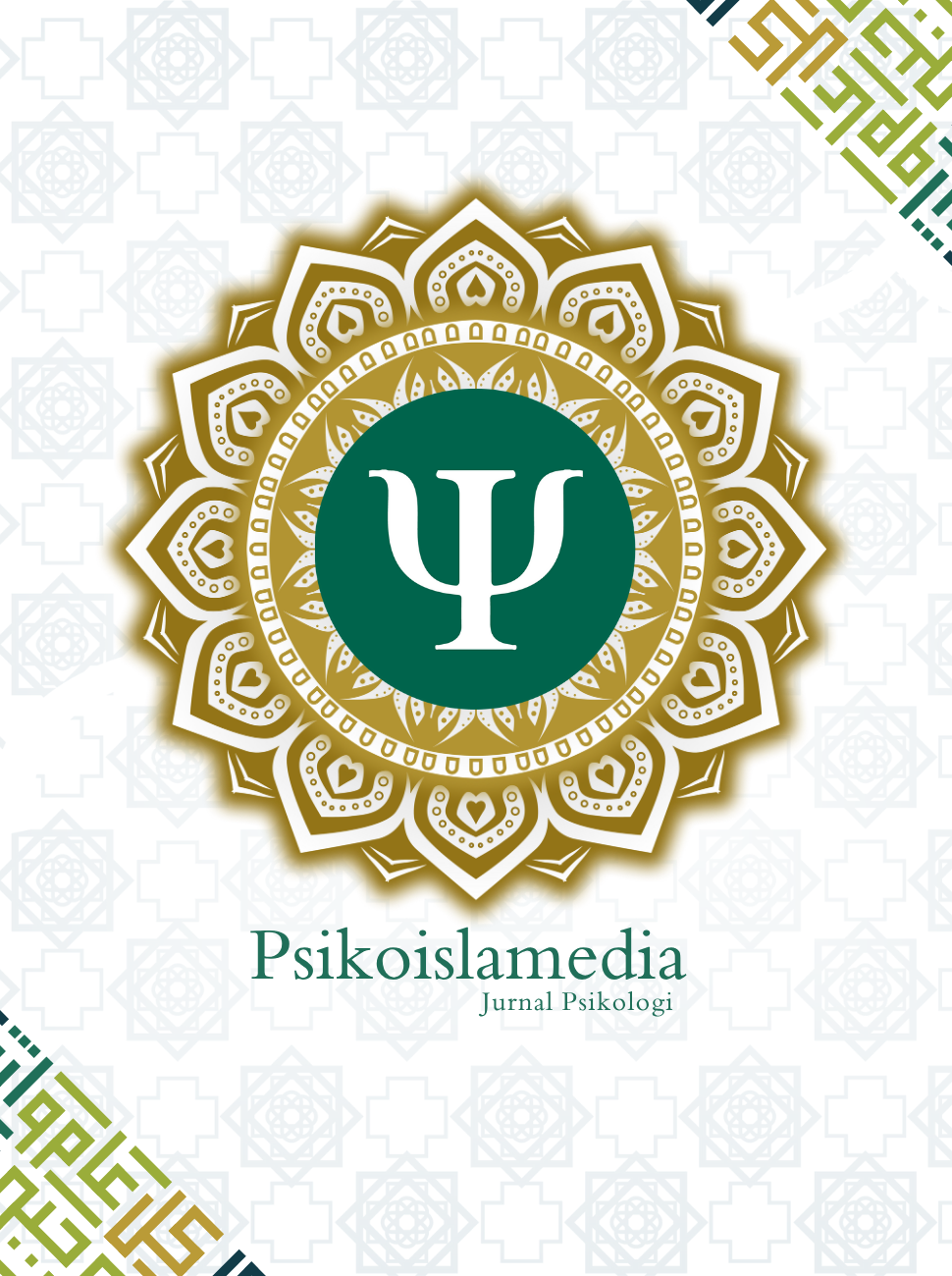Hubungan Antara Sense Of Humor Dan Intimate Friendship
DOI:
https://doi.org/10.22373/psikoislamedia.v4i1.6348Keywords:
Sense of Humor, Intimate friendshipAbstract
Humans as social beings cannot escape from others. This makes humans need to interact with people around. One form of interaction is by making friends. Friendship is considered related to mutual understanding and sharing of thoughts, feelings and other secrets. One factor that determines the quality of friendships is the closeness or intimacy. Sense of humor is one of the factors that support the formation of closeness. This study aims to determine the relationship between sense of humor with intimate friendship. The research sample was 394 students of UIN Suska Riau, who were determined using proportional nonrandom sampling technique. Measuring instruments use a scale of sense of humor (Thorson & Powell, 1993) and intimate friendship scale (Sharabany, 2008). The research hypothesis is "there is a relationship between sense of humor with intimate friendship". Based on the results of the product moment correlation analysis of Pearson's correlation coefficient (r) of 0.486 and probability (p) of 0.000 at a significance level of 1%, which means the hypothesis is accepted. There is a very significant relationship between sense of humor with intimate friendship. The results also showed that sense of humor and intimate friendship were positively correlated. This indicates that the higher the sense of humor a person has, the higher the friendship intimate. Additional analysis shows that there is no difference in sense of humor based on the sexes of men and women, and there are differences in intimate friendship based on the sexes of men and womenReferences
Agung, I. A. 2015. Modul Pelatihan SPSS. Pekanbaru: Fakultas Psikologi Universitas Islam Negeri Sultan Syarif Kasim Riau.
Baron, R. A. & Byrne, D. 2004. Psikologi Sosial. Jakarta: Erlangga.
Bickmore, T. 1998. Friendship and Intimacy in The Digital Age. MAS 714- System Self.
Fitriani, A., & Hidayah, N. 2012. Kepekaan Humor dengan Depresi pada Remaja Ditinjau dari Jenis Kelamin. Humanitas: Jurnal Psikologi Indonesia. Fakultas Psikologi Universitas Ahmad Dahlan.
Flamson, T., & Barret, H.C. 2008. The Encryption Theory of Humor: A Knowledge Based Mechanism of Honest Signaling. Journal of Evolutionary Psychology, 6, 4, 261-281.
Hidayat, R.P. 2010. Peranan Komunikasi Antar Pribadi Sebagai Solusi Konflik pada Hubungan Persahabatan Remaja SMU Negeri 7 Medan.
Hurlock, E.B. 2002. Psikologi Perkembangan Suatu Pendekatan Sepanjang Rentang Kehidupan. (5th ed.). Jakarta: Penerbit Erlangga.
Hutman, H. 2012. Indicators of Relatedness in Adolescent Male Groups: Toward a Qualitative Description. The Qualitative Report, 17, 30, 1-23.
Jones, P.J., & Denbo, M.H. 1989. Age and Sex Role Differences in Intimate Friendships During Childhood and Adolescence. Merrill- Palmer Quart, 35, 445-462.
Jose, H., Parreira, P., & Thorson, J.A. 2007. A Factor-Analytic Study of the Multidimensional Sense of Humor Scale with a Portuguese Sample. North American Journal of Psychology, 9,3, 595-610.
Kartika, H.D. 2014. Hubungan Antara Sense of Humor dan Intimate Friendship pada Remaja. Jurnal. Program Studi Psikologi Universitas Brawijaya Malang.
KO, P., & Buskens, V. 2011. Dynamics of Adolescent Friendships: The Interplay Between Structure and Gender. International Conference on Advances in Social Network Anlysis and Mining.
Martin, R.A. 1998. The Psychology of Humor: an Integrative Approach. London: Department of Psychology University of Western Ontario London.
Martin, R.A. 2007. The Psychology of Humor: An Integrative Approach. Burlington, MA: Elsevier Academic Press.
McGee, E., & Shevlin. M. 2009. Effect of Humor on Interpersonal Attraction and Mate Selection.TheJournal of Psychology, 143, 1, 67-77.
McGraw, P. & Warren, C. 2011. Finding Humor in Distant Tragedies and Close Mishaps. Psychological Science, 23, 1215-1223.
Monks, F.J., Knoers, A.M.P & Haditono, S.R. 2006. Psikologi Perkembangan (Terjemahan). Yogyakarta: Gadjah Mada University Press.
Naranjo-Huebl, L. 2013. From Peek-a-boo to Sarcasm: Women's Humor as a Means of Both Connection and Resistance.
Papalia, D.E., Olds, S.W., & Feldman, R.D. 2007.Human Development. (10thed.). New York: McGraw-Hill.
Pauriyal, K., Sharma, S., & Gulati, J. 2011. Friendship Pattern as a Correlate of Age and Gender Differences among Urban Adolescents.Stud Home Com Sci, 5, 2, 105-111
Safaria, T., & Nofrans, E. S. 2009. Manajemen Emosi. Jakarta: BumiAksara.
Santrock, J.W. 2003.Lifespan Development (8th ed.). Jakarta: Penerbit Erlangga.
Sharabany, R. 2008. Boyfriend, Girlfriend in A Traditional Society: Parenting Styles and Development of Intimate Friendships among Arabs in School. International Journal ofBehavioral Development, 32, 1,66-75.
Spero, D. 2013. Laughter: Is It Really The Best Medicine?.(Online). (http://www.arthritisselfmanagement.com/health,diakses 5 juni 2016).
Thorson, J.A., & Powell, F.C. 1993. Sense of Humor and Dimensions of Personality. Journal of Clinical Psychology, 49, 6, 799-809.
Thorson, J.A., Powell, F.C., Schuller, J.S., & Hampes, W.P. 1997. Psychological Health and Sense of Humor. Journal of Clinical Psychology,53, 6, 605-619.
Downloads
Published
Issue
Section
License
Authors who publish in this Journal agree to the following terms:
- Authors retain copyright and grant the journal right of first publication with the work simultaneously licensed under Attribution-ShareAlike 4.0 International (CC BY-SA 4.0) allows others to share the work with an acknowledgment of the work's authorship and initial publication in this journal.
- Authors are able to enter into separate, additional contractual arrangements for the non-exclusive distribution of the journal's published version of the work (e.g., post it to an institutional repository or publish it in a book), with an acknowledgment of its initial publication in this journal.
- Authors are permitted and encouraged to post their work online (e.g., in institutional repositories or on their website) prior to and during the submission process, as it can lead to productive exchanges, as well as earlier and greater citation of published work. (See The Effect of Open Acces)














